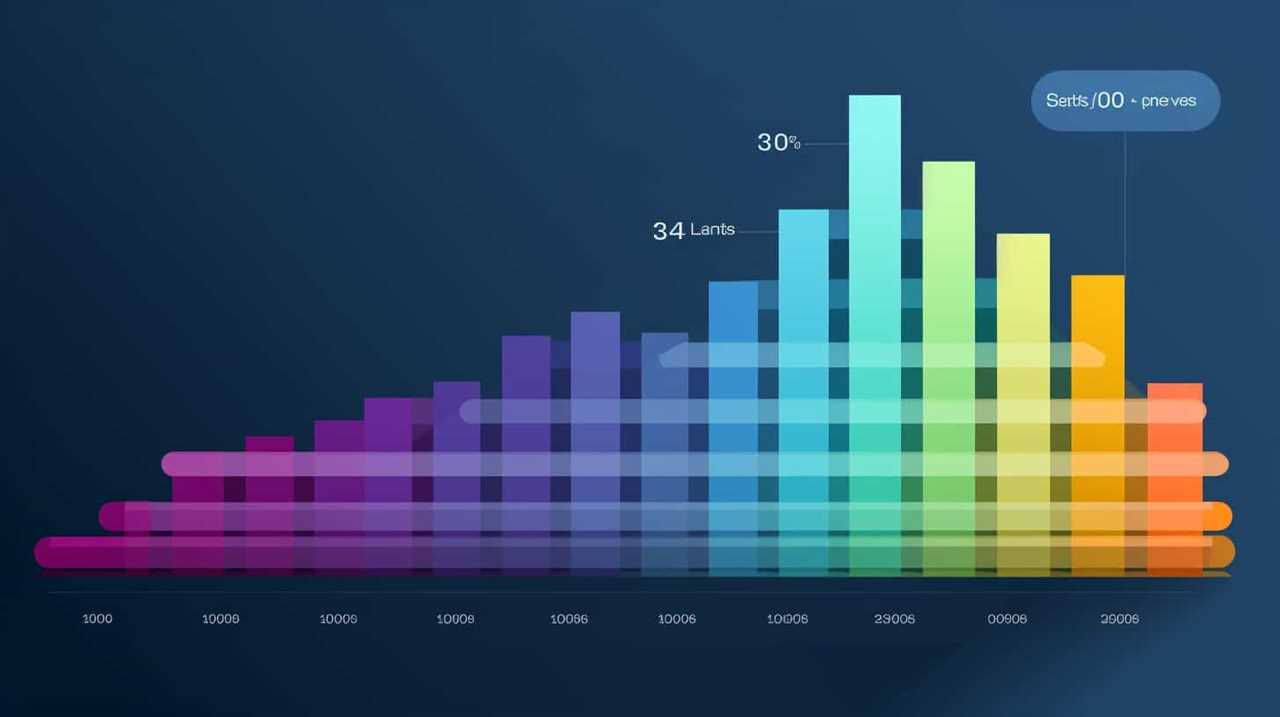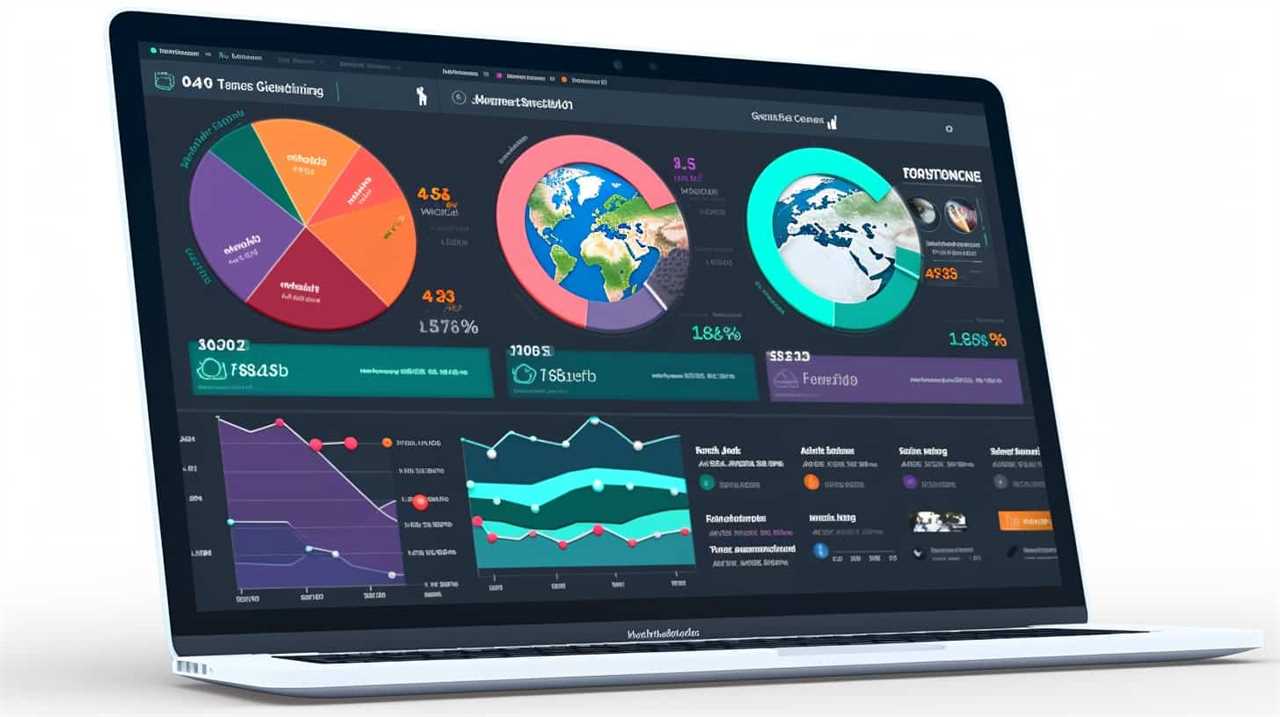Keyword Research
How to Do Seo for Magento 2

Discover the expert advice on optimizing SEO for Magento 2. Given that Magento 2 serves as the base for over 280,000 online commerce websites, enhancing your shop’s search engine visibility is critical.
In this article, we’ll show you the key strategies and techniques to boost your site’s visibility, attract more organic traffic, and outrank your competitors. From optimizing site structure to selecting the right keywords, we’ve got you covered.
Get ready to take your Magento 2 store to the next level with our expert SEO tips.
Key Takeaways
- Speed and performance impact search engine rankings
- Clear and logical site structure improves indexing
- Optimizing metadata enhances visibility in search results
- XML sitemaps help search engines crawl and index content
Understanding Magento 2 SEO Basics
In this section, we’ll explore the fundamental principles of SEO for Magento 2.

When it comes to optimizing your Magento 2 website for search engines, understanding the ranking factors and best practices is crucial.
One of the key ranking factors for Magento 2 SEO is the speed and performance of your website. Ensuring that your site loads quickly and efficiently can have a positive impact on your search engine rankings.
Another important factor is the structure and organization of your website. Implementing a clear and logical site structure, with relevant and descriptive URLs, can help search engines understand and index your content more effectively.
Additionally, optimizing your website’s metadata, including title tags and meta descriptions, is essential for improving your visibility in search engine results.

Optimizing Magento 2 Site Structure for SEO
To optimize the site structure of your Magento 2 website for SEO, we need to focus on implementing a clear and logical organization that enhances search engine visibility. Here are three key strategies to consider:
- Importance of internal linking in Magento 2 SEO:
Internal linking plays a crucial role in improving the visibility of your website. By linking relevant pages together, you can guide search engine crawlers to discover and index your content more effectively. - Leveraging social media for SEO in Magento 2:
Integrating social media into your SEO strategy can drive more traffic to your website. Sharing your content on platforms like Facebook, Twitter, and Instagram can increase your online visibility and attract potential customers. - Choosing the right keywords for your Magento 2 store:
Selecting the appropriate keywords is essential for optimizing your site structure. Conduct thorough keyword research to identify relevant terms that align with your target audience’s search intent.
By implementing these strategies, you can enhance your Magento 2 site’s structure and improve its visibility in search engine rankings.
Now, let’s explore how to choose the right keywords for your Magento 2 store.
Choosing the Right Keywords for Your Magento 2 Store
We prioritize selecting the most relevant keywords for our Magento 2 store to optimize our search engine rankings. Keyword research is essential in understanding the terms and phrases potential customers are using to find products similar to ours.
By conducting thorough keyword research, we can uncover high-volume and low-competition keywords that will drive targeted traffic to our website.
Additionally, competitor analysis plays a crucial role in choosing the right keywords. By analyzing our competitors’ keyword strategies, we can identify gaps and find opportunities to differentiate ourselves. This will help us attract more organic traffic and outrank our competitors in search engine results.
Choosing the right keywords is the foundation of a successful SEO strategy for our Magento 2 store.
In the next section, we’ll explore how to create SEO-friendly content in Magento 2 to further enhance our search engine rankings.

Creating SEO-friendly Content in Magento 2
When it comes to creating SEO-friendly content in Magento 2, there are several key points to consider.
First, optimizing your meta tags and keywords is crucial for improving your search engine rankings.
Additionally, focusing on optimizing your product descriptions with relevant keywords and compelling copy can help attract more organic traffic.
Lastly, paying attention to your URL structure and utilizing descriptive permalinks can further enhance the SEO-friendliness of your content.

Meta Tags and Keywords
As we delve into optimizing SEO for Magento 2, it’s essential to understand the importance of incorporating meta tags and keywords to create SEO-friendly content. Meta tags and keywords play a crucial role in improving website visibility, driving organic traffic, and boosting search engine rankings.
Here are three best practices for optimizing meta tags and keywords in Magento 2:
- Research and choose relevant keywords: Conduct thorough keyword research to identify the terms and phrases your target audience is searching for. Use tools like Google Keyword Planner to find high-volume keywords with low competition.
- Optimize meta tags: Ensure that your meta title and meta description accurately reflect the content of each page. Include relevant keywords, but make sure the tags are concise, compelling, and click-worthy to entice users to click through.
- Use keywords strategically: Incorporate keywords naturally throughout your content, including headings, subheadings, and body text. However, avoid keyword stuffing, as it can harm your SEO efforts. Focus on creating valuable, informative, and user-friendly content that satisfies search intent.
Optimizing Product Descriptions
To optimize product descriptions for SEO in Magento 2, we recommend incorporating relevant keywords and providing detailed information about each product. Writing compelling, keyword-rich descriptions is essential for attracting organic traffic and improving search engine rankings. When creating product descriptions, it’s crucial to optimize for search intent by understanding what users are searching for and tailoring the content to meet their needs. By incorporating the right keywords and providing detailed information, you can enhance the visibility of your products in search results and increase the likelihood of attracting potential customers. Here is a table that summarizes the key points for optimizing product descriptions in Magento 2:
| Step | Description |
|---|---|
| 1 | Identify relevant keywords for each product. |
| 2 | Incorporate the keywords naturally into the description. |
| 3 | Provide detailed information about the product’s features and benefits. |
| 4 | Use persuasive language to engage and convince potential customers. |
| 5 | Optimize for search intent by understanding user needs and tailoring the content accordingly. |
URL Structure and Permalinks
To optimize the URL structure and permalinks for SEO in Magento 2, we recommend using descriptive keywords and ensuring a user-friendly format. Here are three key reasons why the URL structure is important for SEO in Magento 2:

- Improved visibility: A clear and descriptive URL structure helps search engines understand the content of your pages. By including relevant keywords in your permalinks, you can increase the chances of your website ranking higher in search engine results.
- User experience: A well-structured URL not only helps search engines but also improves the user experience. When users see a URL that’s concise and easy to understand, they’re more likely to click on it and stay on your website.
- Link building: An optimized URL structure makes it easier for other websites to link to your content. When sharing your URLs, users and other websites are more likely to use descriptive anchor text that includes keywords, which can boost your SEO efforts.
Configuring SEO Settings in Magento 2
We can configure SEO settings in Magento 2 by accessing the admin panel. One important step is to configure the robots.txt file, which tells search engine crawlers which pages to crawl and index. In Magento 2, you can easily customize the robots.txt file by going to the Configuration section in the admin panel and selecting the Design tab.
Another key aspect of optimizing SEO settings in Magento 2 is to optimize XML sitemaps. XML sitemaps help search engines understand the structure of your website and index it more effectively. Magento 2 allows you to generate XML sitemaps automatically or manually. By regularly updating and optimizing your XML sitemaps, you can ensure that search engines can easily discover and index your website’s pages.
Now, let’s move on to the next topic: enhancing page loading speed for better SEO.
Enhancing Page Loading Speed for Better SEO
To enhance page loading speed for better SEO, we can implement various techniques.

One way is to optimize images by compressing them without compromising on quality.
Another method is to minify CSS and JavaScript files to reduce their size and improve loading time.
Additionally, caching can be utilized to store elements of a website and deliver them quickly to users, resulting in faster loading speeds.
Image Compression Techniques
How can image compression techniques enhance page loading speed for better SEO in Magento 2?

Image compression plays a crucial role in optimizing website performance and improving SEO rankings. Here are three ways image compression techniques can enhance page loading speed for better SEO:
- Reduced File Size: Compressing images reduces their file size, allowing them to load faster on webpages. This optimization technique minimizes the time it takes for the browser to download and render the images.
- Improved User Experience: Faster page loading speed enhances user experience, reducing bounce rates and increasing engagement. By compressing images, you ensure that visitors can quickly access your website’s content, leading to higher user satisfaction and increased conversions.
- Image SEO Optimization: Image compression techniques also help with image SEO optimization. By reducing file sizes, you can improve website performance, which in turn boosts your search engine rankings. Additionally, optimizing image alt text with relevant keywords further enhances SEO visibility.
Implementing image compression techniques in Magento 2 can significantly enhance page loading speed, leading to better SEO performance and improved user experience.
Minifying CSS and JavaScript
Minifying CSS and JavaScript optimizes page loading speed and enhances SEO by reducing file sizes and improving website performance. By removing unnecessary spaces, comments, and line breaks from these files, the overall size is reduced, resulting in faster load times for users. This is crucial for SEO as page speed is a ranking factor for search engines. Additionally, minifying CSS and JavaScript can help optimize server response time, further enhancing the user experience.
To visualize the impact of minifying HTML files, consider the following table:

| Before Minification | After Minification | |
|---|---|---|
| Size | 300 KB | 150 KB |
| Load Time | 5 seconds | 2 seconds |
| Server Response Time | 500 ms | 250 ms |
| Page Speed Score | 60 | 90 |
As you can see, minifying HTML files leads to significant improvements in both file size and performance, ultimately benefiting SEO. To further enhance page loading speed, the next section will discuss caching techniques.
Caching for Faster Loading
Caching enhances page loading speed for better SEO performance in Magento 2 websites. When it comes to optimizing your website for SEO, one of the key factors to consider is the loading speed of your pages. Slow loading pages can negatively impact your search engine rankings and user experience.
By implementing caching techniques, you can significantly improve the loading speed of your Magento 2 website. Here are three important aspects to consider:
- Image optimization: Compress and optimize your images to reduce their file size without sacrificing quality. This will help improve the loading speed of your pages.
- Server caching: Enable server-side caching to store static versions of your web pages. This allows the server to quickly deliver the cached version instead of generating the page from scratch, resulting in faster loading times.
- Content caching: Utilize content caching techniques to store frequently accessed data, such as product information or category pages, in memory. This reduces the need to retrieve data from the database, leading to faster page loading.
Implementing SEO-friendly URLs in Magento 2
To improve the search engine optimization (SEO) of a Magento 2 website, it’s essential to implement SEO-friendly URLs. SEO-friendly URLs are easy to read, contain relevant keywords, and provide a clear structure for search engines to crawl and understand the website’s content. By using descriptive and concise URLs, you can enhance the user experience and make it easier for search engines to index your website.

In Magento 2, you can configure the URL settings by going to Stores > Configuration > General > Web. Here, you can enable the ‘Search Engine Optimization’ option and customize the URL structure. It’s recommended to include relevant keywords in your URLs to improve their visibility in search engine results.
Additionally, implementing schema markup can further enhance the SEO of your Magento 2 website. Schema markup provides structured data to search engines, making it easier for them to understand and display your website’s content in search results. By implementing schema markup, you can improve your website’s visibility and click-through rates.
Utilizing Metadata and Tags for Magento 2 SEO
We can enhance the search engine optimization (SEO) of a Magento 2 website by effectively utilizing metadata and tags. Here are three key ways to use meta tags effectively for Magento 2 SEO:
- Title tags: Crafting compelling and keyword-rich title tags is crucial for on-page optimization. Including relevant keywords in the title tag helps search engines understand the content of the page and improves its visibility in search results.
- Meta descriptions: Writing optimized meta descriptions that accurately summarize the page’s content can entice users to click through to your website. Including relevant keywords in the meta description can also help search engines understand the page’s relevance to a user’s query.
- Schema markup: Implementing schema markup on your Magento 2 website can provide search engines with additional information about your content, such as product details or reviews. This structured data markup helps search engines better understand and display your content in rich snippets.
By effectively utilizing metadata and tags, you can significantly improve the SEO of your Magento 2 website.

Next, let’s explore the importance of optimizing images for improved SEO in Magento 2.
Optimizing Images for Improved SEO in Magento 2
Continuing from our discussion on utilizing metadata and tags for Magento 2 SEO, let’s now explore how to optimize images for improved SEO in Magento 2.
Image optimization is crucial for enhancing your website’s visibility and boosting its search engine rankings. One key aspect of image optimization is the use of alt text. Alt text, or alternative text, is a description that you provide for an image. It helps search engines understand what the image is about and improves accessibility for visually impaired users.
When optimizing your images in Magento 2, be sure to include relevant keywords in the alt text. This won’t only improve your website’s SEO but also provide users with a better user experience. Remember to keep the alt text concise and descriptive for maximum impact.

Monitoring and Analyzing SEO Performance in Magento 2
As we delve into monitoring and analyzing SEO performance in Magento 2, optimizing images for improved SEO remains a crucial aspect that warrants close attention. However, it’s not the only factor to consider when tracking SEO progress and conducting competitor analysis.
Here are three additional key elements to focus on:
- Keyword performance: Regularly monitor the performance of your targeted keywords to see how they’re ranking in search engine results pages (SERPs). This will help you identify opportunities for optimization and improve your website’s visibility.
- Backlink analysis: Analyze the backlinks pointing to your website as well as those of your competitors. This will give you insights into the quality and quantity of backlinks, allowing you to develop a more effective link building strategy.
- Site speed optimization: A slow-loading website can negatively impact your SEO performance. Use tools like Google PageSpeed Insights to assess your site’s speed and identify areas for improvement.
Frequently Asked Questions
How Can I Improve the Mobile Responsiveness of My Magento 2 Website for Better Seo?
To improve mobile responsiveness of our Magento 2 website for better SEO, we can optimize page load speed, use responsive design, and ensure proper image optimization. These enhancements will enhance user experience and improve mobile performance.
What Are Some Effective Strategies for Link Building in Magento 2 Seo?
Effective outreach and the use of link building tools are key strategies for successful link building in Magento 2 SEO. We’ve found that utilizing these tactics has greatly improved our website’s rankings and overall visibility.

How Can I Optimize My Magento 2 Website for Voice Search?
To optimize our Magento 2 website for voice search, we need to focus on voice search optimization and mobile SEO. By implementing strategies like optimizing for long-tail keywords and improving site speed, we can enhance our website’s visibility and user experience.
What Are the Best Practices for Optimizing Product Pages in Magento 2 for Seo?
To optimize product pages in Magento 2 for SEO, we focus on improving page load speed and optimizing meta tags. These practices enhance search engine visibility and drive organic traffic to our site.
How Can I Implement Structured Data Markup in Magento 2 to Enhance Search Engine Visibility?
To enhance search engine visibility in Magento 2, we can implement structured data markup, such as implementing rich snippets and optimizing meta tags. These techniques help improve organic rankings and provide more informative search results.
Conclusion
In conclusion, implementing effective SEO strategies for your Magento 2 store is crucial for improving your online visibility and driving organic traffic.

By optimizing site structure, selecting the right keywords, and creating SEO-friendly content, you can enhance your store’s search engine rankings.
Configuring settings, utilizing metadata and tags, and optimizing images are also important factors in improving your store’s SEO.
Finally, monitoring performance and making necessary adjustments will ensure that your SEO efforts continue to yield positive results.
Remember, ‘A stitch in time saves nine,’ so invest time and effort in SEO to reap long-term benefits for your Magento 2 store’s success.

Keyword Research
4 Best Keyword Research Tips for Creative Industries

Having trouble finding the perfect keywords for your art field? Search no more! Our top four tips for conducting keyword research provide all the information you need.
Understanding your target audience is key, so let’s dive in and brainstorm relevant keywords.
Don’t forget to utilize powerful keyword research tools to enhance your strategy.
And finally, analyze and refine your keyword list to ensure optimal results.
Get ready to master the art of keyword research in the creative world!
Key Takeaways
- Understanding the target audience is crucial in keyword research for creative industries.
- Brainstorming relevant keywords can be done through competitor analysis, customer feedback, industry trends, and social media.
- Keyword research tools provide valuable insights and data, helping uncover hidden opportunities and understand customer intent.
- Analyzing and refining the keyword list by incorporating long tail and localized keywords can maximize SEO efforts in creative industries.
Understand Your Target Audience
In this article, we’ll explore the importance of understanding our target audience in conducting effective keyword research for creative industries.
Understanding consumer behavior and identifying market trends are crucial steps in developing a successful keyword strategy. By gaining insights into our target audience, we can tailor our keywords to align with their preferences and needs. This understanding allows us to create content that resonates with our audience and drives relevant traffic to our websites.
By analyzing consumer behavior, such as their search patterns and preferences, we can identify the keywords that are most likely to attract our target audience. Additionally, staying updated on market trends helps us anticipate changes in consumer demand and adjust our keyword strategy accordingly.
Ultimately, understanding our target audience is the foundation of effective keyword research in creative industries.
Brainstorm Relevant Keywords
To effectively brainstorm relevant keywords for creative industries, we need to collaborate and explore various ideas as a team. Keyword expansion techniques and long tail keyword opportunities can help us expand our keyword list and target a wider range of potential customers.
Here are four strategies to consider:
- Conduct competitor analysis: Study the keywords used by your competitors to gain insights and identify new keyword possibilities.
- Use customer feedback: Review customer reviews, comments, and inquiries to uncover keywords that reflect their needs and interests.
- Analyze industry trends: Stay up-to-date with the latest trends in your creative industry and incorporate relevant keywords into your list.
- Leverage social media: Monitor social media conversations related to your industry to discover popular keywords and phrases.
By implementing these strategies, we can generate a comprehensive list of relevant keywords that will enhance our online visibility and attract our target audience.
Now, let’s explore how we can use keyword research tools to refine our keyword selection and maximize our SEO efforts.
Use Keyword Research Tools
Now let’s explore how we can leverage keyword research tools to further enhance our keyword selection and maximize our SEO efforts in the creative industries.
Keyword research tools provide valuable insights and data that can help us identify the most relevant and high-performing keywords for our artistic industries and design businesses. These tools offer features such as keyword suggestions, search volume data, competition analysis, and trend tracking.
By using these tools, we can uncover hidden opportunities, understand customer intent, and optimize our website content accordingly. Additionally, keyword research tools enable us to stay updated with the latest trends and search patterns in our industries, allowing us to adapt our SEO strategies accordingly.
Analyze and Refine Your Keyword List
Now, let’s delve into analyzing and refining our keyword list to ensure that we’re targeting the most effective and relevant keywords for our creative industries.
To optimize our keyword list, we should focus on incorporating long tail keywords. These are specific keyword phrases that are more likely to attract our target audience and have less competition. By including these long tail keywords, we can increase our chances of ranking higher on search engine result pages.
Additionally, it’s crucial to incorporate localized keywords for targeted marketing. This means including keywords that are specific to our target geographic location, helping us reach potential customers in our area.
Frequently Asked Questions
How Can I Effectively Use Social Media to Research Keywords for My Creative Industry?
To effectively use social media for keyword research in our creative industry, we leverage influencer collaborations and utilize user-generated content. These strategies provide valuable insights into the keywords that resonate with our target audience and drive engagement.
Are There Any Specific Techniques or Strategies to Find Long-Tail Keywords in the Creative Industry?
When finding niche keywords, it’s important to consider the value of long-tail keywords in the creative industry. We can employ specific techniques and strategies to uncover these valuable keywords for maximum impact and success.
What Are Some Common Mistakes to Avoid When Conducting Keyword Research for Creative Industries?
When it comes to keyword research for creative industries, avoiding common mistakes is crucial. By understanding how to avoid keyword research pitfalls in the creative industry, we can optimize our strategies and achieve mastery.
How Can I Ensure That My Keyword Research Aligns With Current Trends in the Creative Industry?
To ensure our keyword research aligns with current trends in the creative industry, we emphasize the importance of data analysis and staying ahead of the competition by identifying emerging trends.
Are There Any Alternative Keyword Research Methods That Are Specific to the Creative Industry?
Yes, there are alternative keyword research tools tailored specifically to the unique challenges of the creative industry. These tools can help us uncover trending keywords and optimize our content for maximum visibility.
How Can Holistic SEO Benefit Fashion Designers?
Holistic seo strategies for fashion designers can greatly benefit their online presence and overall brand success. By implementing these strategies, designers can ensure their website is optimized for search engines, driving organic traffic and increasing visibility. From keyword research and on-page optimization to holistic link building and content creation, fashion designers can establish a strong online presence, reaching their target audience effectively. Ultimately, holistic SEO strategies contribute to higher website rankings, brand authority, and increased sales for fashion designers.
Conclusion
In the world of creative industries, understanding your target audience and using relevant keywords is crucial for success. By utilizing keyword research tools and analyzing your keyword list, you can refine your content to reach the right audience.
Remember, keywords are like a secret language that connects you with your desired audience, so choose them wisely.
With these tips, you can unlock the door to reaching and captivating your target audience, leading to greater success in the creative industries.
Keyword Research
How to Keyword Search Excel

Struggling to locate specific data in Excel? You’re in the right place!
In this article, we will guide you through the process of keyword searching in Excel. We will show you how to utilize the search function effectively, employ advanced options, and use filters to refine your search results.
Additionally, we will share tips and tricks, including the use of macros, to enhance your keyword searching skills.
Get ready to master Excel’s search capabilities!
Key Takeaways
- Excel’s search function allows users to quickly find and navigate through large amounts of data.
- Utilizing advanced search options like wildcards, match case, and search by format enhances the process of finding specific keywords within a spreadsheet.
- Applying filters in Excel allows users to specify criteria to determine which rows of data are displayed, narrowing down search results.
- Employing macros in Excel streamlines the keyword searching process, automating it and saving time and effort.
Understanding Excel’s Search Function
In this section, we’ll explore the functionality of Excel’s search function and how it can be used to efficiently locate specific keywords within a spreadsheet.
Excel’s search function is a powerful tool that allows users to quickly find and navigate through large amounts of data.
One useful feature of the search function is the ability to use wildcard characters. Wildcard characters, such as the asterisk (*) and question mark (?), can be used to represent unknown or variable characters in a keyword search. This can greatly enhance the search capabilities and flexibility in Excel.
Another efficient way to search for keywords in Excel is by utilizing the ‘Find and Replace’ feature. This feature allows users to not only find specific keywords, but also replace them if needed.
Utilizing Advanced Search Options in Excel
To effectively utilize advanced search options in Excel, we can employ various techniques to streamline the process of finding specific keywords within a spreadsheet. Here are three key ways to leverage these advanced search options:
- Excel’s search function: Excel’s search function allows users to search for keywords within a single sheet. Compared to other spreadsheet software, Excel provides a more robust and efficient search functionality.
- Searching in multiple sheets: Excel also enables users to search for keywords in multiple sheets. This feature is particularly useful when working with large datasets spread across multiple sheets, as it allows for a comprehensive search across the entire workbook.
- Advanced search options: Excel offers advanced search options like wildcards, match case, and search by format. These options allow users to refine their searches and find specific keywords with greater precision.
Using Filters to Narrow Down Search Results in Excel
We can further narrow down search results in Excel by applying filters. Filtering data in Excel allows us to specify criteria that will determine which rows of data are displayed. By using filters, we can easily find and analyze specific information within a large dataset.
To apply a filter in Excel, follow these steps:
- Select the range of data you want to filter.
- Go to the Data tab and click on the Filter button.
- A dropdown arrow will appear next to each column header. Click on the arrow to display the filter options for that column.
Using filters in Excel gives us the ability to search for specific values, text, or even patterns using wildcards. Wildcards are special characters that represent unknown or variable characters. For example, the asterisk (*) can be used to represent any number of characters, while the question mark (?) represents a single character. By using wildcards in Excel search, we can further refine our filters and find exactly what we’re looking for.
Employing Macros for Efficient Keyword Searching in Excel
When using filters to narrow down search results in Excel, we can further enhance our keyword searching efficiency by employing macros. Customizing search settings in Excel allows us to tailor our search criteria to specific needs, such as searching within a range of cells or ignoring case sensitivity.
Automating keyword search using VBA macros eliminates the need for manual searching, saving time and effort. With macros, we can set up automated processes to search for keywords across multiple worksheets or workbooks, generating instant results.
By using macros, we can streamline our keyword searching process and ensure accurate and efficient results.
In the next section, we’ll discuss some tips and tricks for effective keyword search in Excel, building upon the techniques we’ve already explored.
Tips and Tricks for Effective Keyword Search in Excel
How can we further enhance our keyword searching efficiency in Excel?
One way is by using wildcard characters for more precise keyword searches. Wildcards are special characters that represent unknown or variable characters in a search string. For example, the asterisk (*) represents any number of characters, while the question mark (?) represents a single character. By incorporating these wildcard characters into our search queries, we can broaden or narrow down our search results as needed.
Another technique to consider is creating custom search formulas in Excel. These formulas allow us to specify specific keywords or conditions to search for within our data. For instance, we can use the COUNTIF function to count the number of occurrences of a particular keyword in a range of cells. By utilizing these custom search formulas, we can quickly and accurately locate the information we need.
Frequently Asked Questions
Can I Search for Specific Formatting Options, Such as Bold or Italicized Text, in Excel Using Keyword Search?
Yes, we can use advanced search options in Excel to find specific formatting styles like bold or italicized text. We can also use wildcard characters in keyword searches to refine our search results.
Is It Possible to Search for Keywords Within Only a Specific Range of Cells in Excel?
Yes, it is possible to search for keywords within a specific range of cells in Excel. By using advanced filtering techniques and incorporating wildcard characters, you can enhance your keyword searches for more precise results.
How Can I Search for Keywords in Excel and Have the Search Results Display in a Separate Sheet?
We can use advanced filtering techniques in Excel to search for keywords and display the results in a separate sheet. Additionally, we can automate this process using VBA macros for efficient and seamless keyword searching.
Can I Search for Keywords in Excel and Have the Search Results Automatically Update as New Data Is Added?
Yes, we can search for keywords in Excel and have the search results update automatically. One way is to use conditional formatting to highlight specific keywords. Another advanced technique is using wildcards or regular expressions for keyword searching.
Is There a Way to Search for Keywords in Excel and Have the Search Function Ignore Certain Cells or Columns in the Search Process?
Yes, there are filtering options and advanced search techniques in Excel to refine keyword searches. These options allow the search function to ignore specific cells or columns, providing more precise and targeted search results.
Conclusion
In conclusion, mastering the art of keyword searching in Excel can unlock a treasure trove of data.
By understanding Excel’s search function and utilizing advanced search options, filters, and macros, users can efficiently find and analyze specific information within their spreadsheets.
With these tips and tricks at your disposal, navigating through vast amounts of data becomes as smooth as a gentle breeze on a sunny day.
So seize the power of Excel’s keyword search and let your data exploration soar to new heights.

Keyword Research
How to Keyword Search a Website

Ready to uncover the secrets of successful keyword searching on your website? We’re here to help!
In this article, we’ll guide you through the process step-by-step, ensuring that you gain a thorough understanding of the importance of keyword research.
We’ll show you how to choose the right keywords, utilize powerful search tools and techniques, and implement on-page optimization strategies that will elevate your website’s visibility.
Get ready to master the art of keyword searching and take your website to new heights!
Key Takeaways
- Keyword research is crucial for optimizing website content and improving search engine rankings.
- Long tail keywords can attract more targeted traffic to a website.
- Balancing keyword usage and incorporating long tail keywords can increase the chances of ranking higher.
- Analyzing and adjusting keyword strategy regularly is essential for success.
Understanding the Importance of Keyword Research
Keyword research is vital for optimizing website content and improving search engine rankings. It plays a crucial role in SEO by helping us understand the behavior of our target audience and the language they use when searching for information online.
One aspect of keyword research that shouldn’t be overlooked is the role of long tail keywords in SEO. These are highly specific and less competitive keywords that can attract more targeted traffic to our website. By incorporating long tail keywords into our content, we can increase our chances of ranking higher in search engine results and attracting visitors who are more likely to convert.
Another important factor to consider is the impact of keyword density on search engine rankings. Keyword density refers to the number of times a keyword appears in relation to the total number of words on a webpage. While it’s important to include keywords in our content, we must also be mindful of overusing them, as this can be seen as spammy by search engines. Striking the right balance is key to optimizing our website for search engine rankings.
Choosing the Right Keywords for Your Website
Now, let’s delve into the process of selecting the most appropriate keywords for our website, leveraging the insights gained from our previous discussion on keyword research. When choosing keywords, it’s important to consider their relevance, search volume, and competition.
Here are some key points to keep in mind:
- Keyword Research: Start by conducting thorough keyword research to identify relevant keywords that align with your website’s content and target audience.
- Long Tail Keywords: Incorporate long tail keywords, which are more specific and have lower competition. They help target a niche audience and can improve your website’s visibility in search results.
- Keyword Density: Maintain an optimal keyword density by strategically placing keywords throughout your website’s content. Avoid keyword stuffing, as it can negatively impact your website’s ranking.
- Competitor Analysis: Analyze the keywords used by your competitors to gain insights and identify potential opportunities.
- Regular Evaluation: Continuously monitor and evaluate the performance of your chosen keywords. Make necessary adjustments based on changes in search trends and your website’s goals.
Utilizing Keyword Search Tools and Techniques
After conducting thorough keyword research, we can now explore the utilization of various keyword search tools and techniques to further optimize our website.
Keyword research tools play a crucial role in identifying the most relevant and high-performing keywords for our website. These tools provide valuable insights into search volume, competition, and potential traffic.
By using keyword research tools such as Google Keyword Planner, SEMrush, or Ahrefs, we can identify popular keywords that align with our target audience and industry.
Once we’ve selected the right keywords, we can then focus on optimizing our website content by strategically incorporating these keywords into our titles, headings, meta descriptions, and body text. This will help improve our website’s visibility, attract relevant traffic, and ultimately drive conversions.
Implementing Effective On-Page Optimization Strategies
To optimize our website for better search engine rankings, we implement effective on-page optimization strategies. By implementing SEO best practices, we can maximize website traffic and attract more organic visitors. Here are five key strategies to consider:
- Optimize page titles and meta descriptions: Craft compelling and keyword-rich titles and descriptions to improve click-through rates and search engine visibility.
- Use relevant keywords in content: Research and incorporate relevant keywords naturally throughout your content to improve relevance and search visibility.
- Optimize URL structure: Use descriptive and keyword-rich URLs to help search engines understand the content of your pages.
- Improve site speed: Optimize images, minify code, and leverage caching techniques to enhance site speed, which can positively impact search rankings.
- Mobile optimization: Ensure your website is mobile-friendly to cater to the increasing number of users accessing the internet through mobile devices.
Analyzing and Adjusting Your Keyword Strategy for Success
In order to achieve success with your keyword strategy, it’s essential to analyze and adjust it regularly. One important aspect of analysis is to examine competitor keywords. By understanding what keywords your competitors are targeting, you can gain insights into their strategies and identify opportunities for improvement in your own approach.
Additionally, incorporating long tail keywords can be highly beneficial. These are longer, more specific phrases that often have lower search volume but higher conversion rates. By incorporating long tail keywords into your strategy, you can target a more niche audience and increase the likelihood of attracting qualified leads.
To ensure continued success, it’s important to monitor the performance of your keywords and make adjustments as needed. Remember, analyzing and adjusting your keyword strategy is an ongoing process that requires dedication and attention to detail.
Frequently Asked Questions
How Do I Track the Performance of Keywords on My Website?
To track the performance of keywords on our website, we analyze keyword data. This helps us understand which keywords are driving traffic and conversions. By monitoring their performance, we can optimize our SEO strategy for better results.
Are There Any Alternative Methods to Keyword Research?
There are alternative keyword research methods available that can be used in addition to traditional website keyword search. It is important to compare different keyword search tools to find the most effective one for your needs.
What Are the Best Practices for Optimizing Images on a Website?
What are the best practices for optimizing images on a website? We can improve loading speed with image compression techniques and enhance accessibility by using descriptive alt text for better image optimization.
How Can I Improve My Website’s Loading Speed for Better Search Engine Rankings?
To improve our website’s loading speed for better search engine rankings, we can implement various strategies for increasing website speed and performance. Optimizing images, minifying code, and utilizing caching techniques are effective ways to achieve this goal.
What Are Some Common Mistakes to Avoid in Keyword Optimization?
When it comes to keyword optimization, there are common mistakes to avoid. It’s important to effectively use long tail keywords to enhance search engine rankings and drive targeted traffic to your website.
Conclusion
In conclusion, keyword research is a critical aspect of website optimization.
By choosing the right keywords and utilizing effective search tools and techniques, you can improve your website’s visibility and attract more organic traffic.
Implementing on-page optimization strategies further enhances your chances of success.
Remember to regularly analyze and adjust your keyword strategy to stay ahead of the competition.
So, let’s go out there and turn our websites into keyword superheroes, saving the day with relevant and high-ranking content!
-

 Expert Content Authority3 months ago
Expert Content Authority3 months agoThe Pillar of SEO: Why Content Consistency Matters Most
-

 Learning Center3 months ago
Learning Center3 months agoUncover How To Use ChatGPT to Write Effective Ad Copy
-

 Learning Center3 months ago
Learning Center3 months agoAI in 2024: 10 Things We are NOT Looking Forward To
-

 Holistic SEO1 hour ago
Holistic SEO1 hour agoHolistic Local SEO Tactics for Small Businesses
-

 Learning Center3 months ago
Learning Center3 months agoOptimize Your Digital Experience with Akamai CDN
-

 Learning Center3 months ago
Learning Center3 months agoUnbiased RankerX Review: A Deep Dive into Its SEO Capabilities
-

 Holistic SEO3 months ago
Holistic SEO3 months agoMoney Robot Review [2024]
-

 Learning Center3 months ago
Learning Center3 months agoExperience How GPT-4 Turbo Beats Claude 2: A Review
















